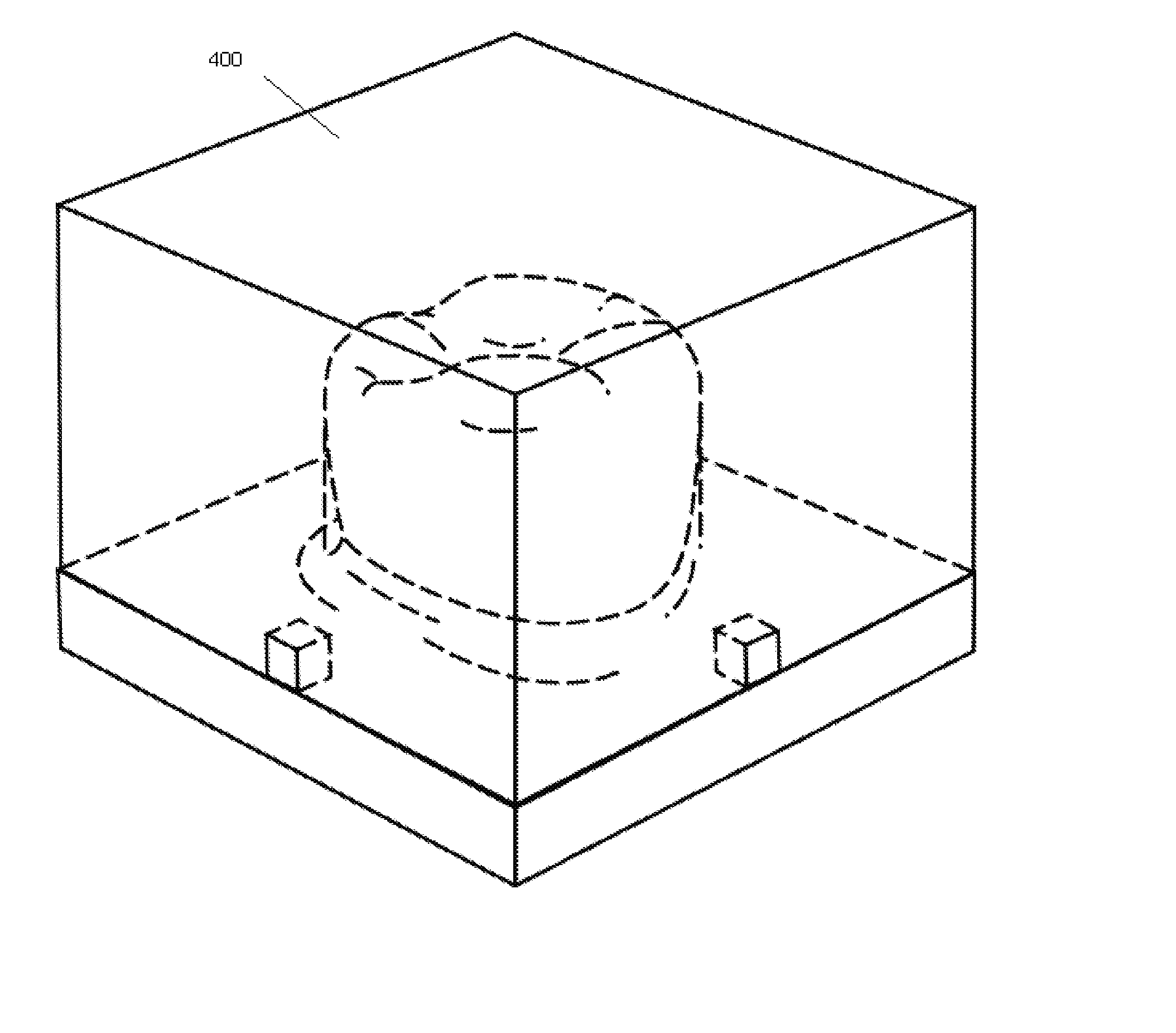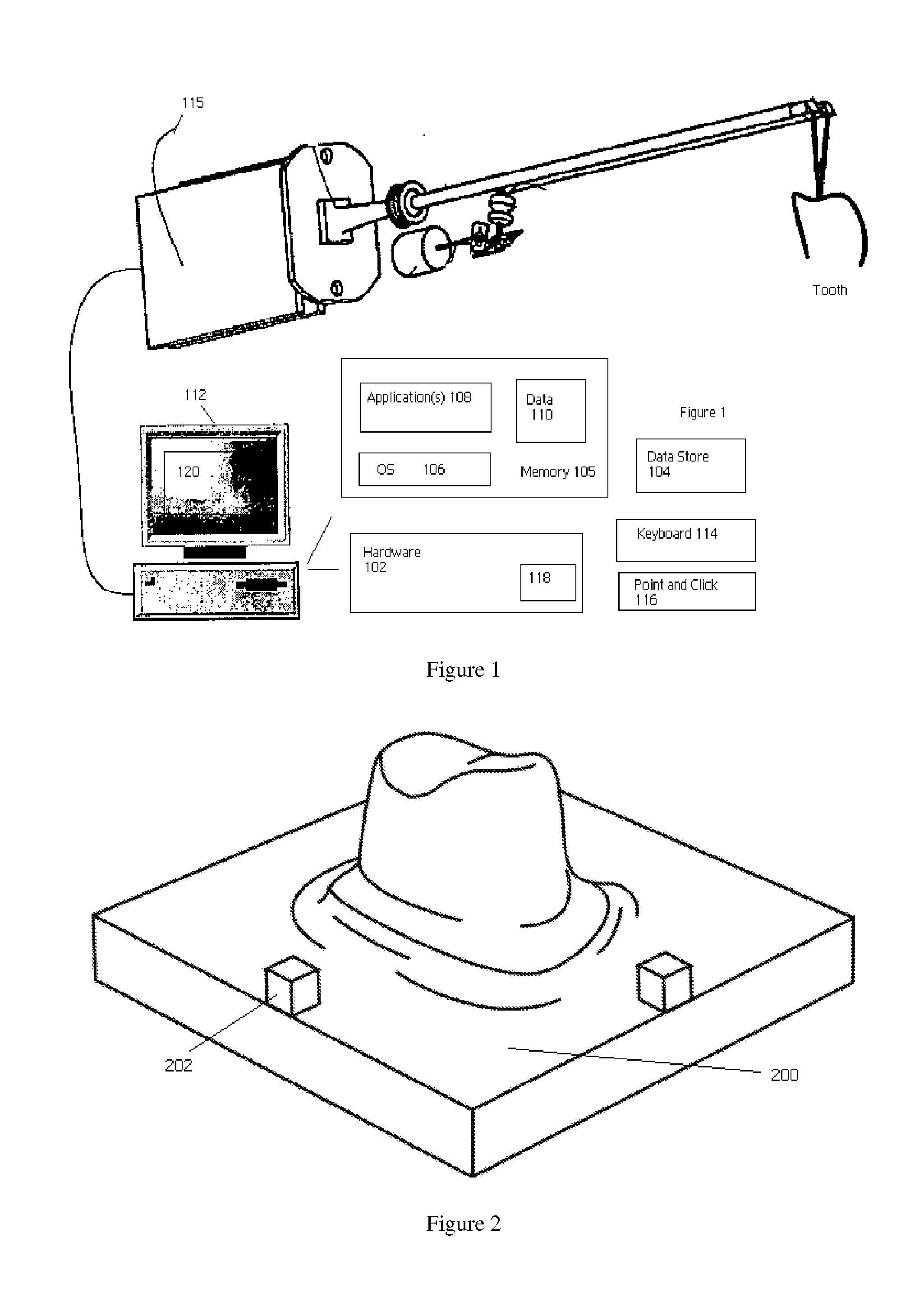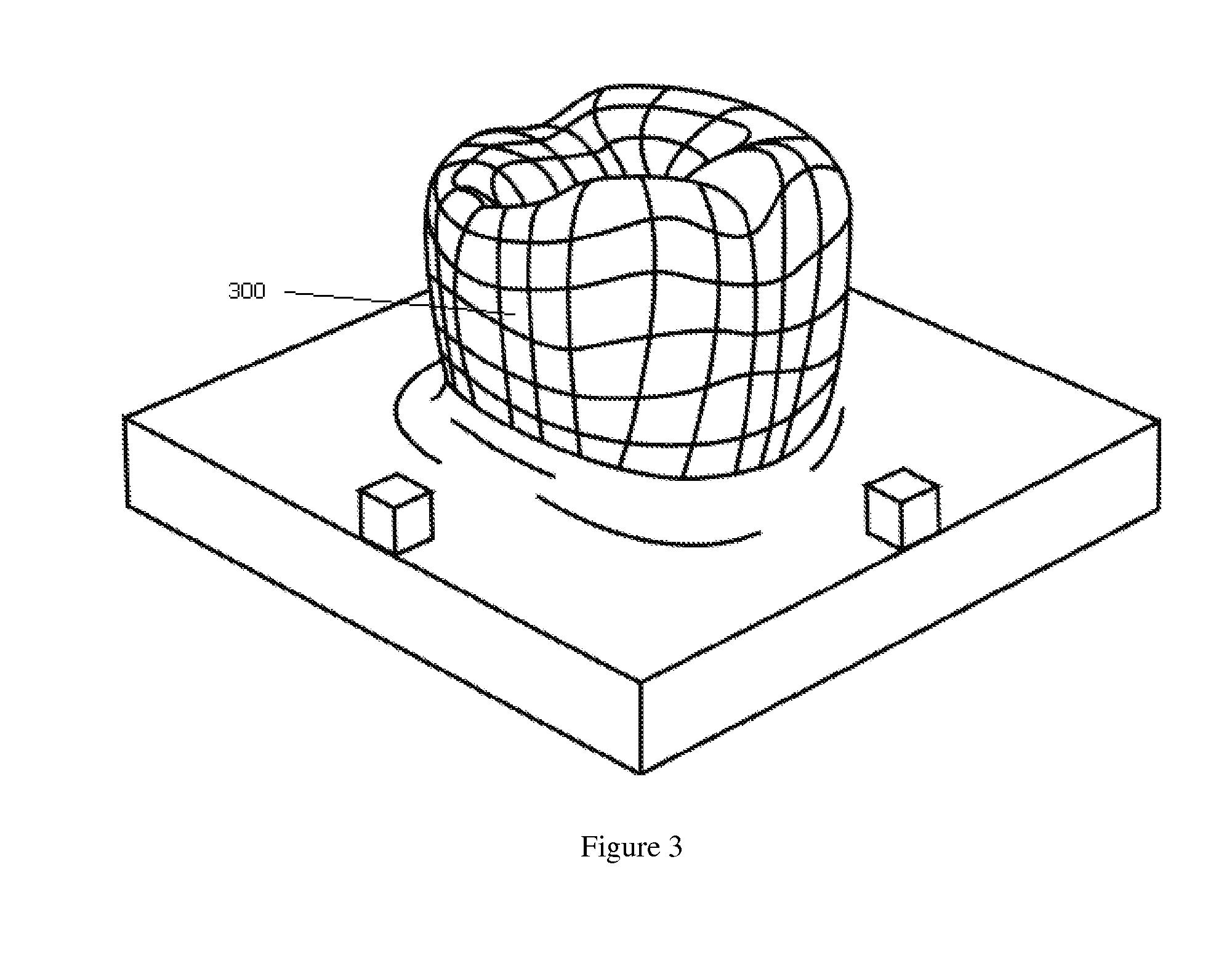Digital impression for remote manufacturing of dental impressions
a technology of remote manufacturing and dental impressions, applied in the field of computer-aided manufacturing of dental items, can solve the problems of time-consuming activity, many patients suffering from gag reflex or breathing problems, and time-consuming impression taking process
- Summary
- Abstract
- Description
- Claims
- Application Information
AI Technical Summary
Benefits of technology
Problems solved by technology
Method used
Image
Examples
Embodiment Construction
[0021] In one aspect, the present invention provides a method, preferably implemented in a computer, for generating a digital dental impression. A representative computer 100 comprises hardware 102, suitable storage 104 and memory 105 for storing an operating system 106, one or more software applications 108 and data 110, conventional input and output devices (a display 112, a keyboard 114, a point-and-click device 116, and the like), other devices 118 to provide network connectivity, and the like. A laser digitizer system 115 is used to obtain optical scans from a patient's dental anatomy. Using a conventional graphical user interface 120, an operator can view and manipulate models as they are rendered on the display 112.
[0022] A digital impression may be obtained using an intra-oral digitizer, such as the E4D Dentist system available from D4D Technologies, LLC and described by commonly-owned, co-pending U.S. Pat. No. 7,184,150. The prepared area and adjacent teeth are scanned usi...
PUM
 Login to View More
Login to View More Abstract
Description
Claims
Application Information
 Login to View More
Login to View More - R&D
- Intellectual Property
- Life Sciences
- Materials
- Tech Scout
- Unparalleled Data Quality
- Higher Quality Content
- 60% Fewer Hallucinations
Browse by: Latest US Patents, China's latest patents, Technical Efficacy Thesaurus, Application Domain, Technology Topic, Popular Technical Reports.
© 2025 PatSnap. All rights reserved.Legal|Privacy policy|Modern Slavery Act Transparency Statement|Sitemap|About US| Contact US: help@patsnap.com



